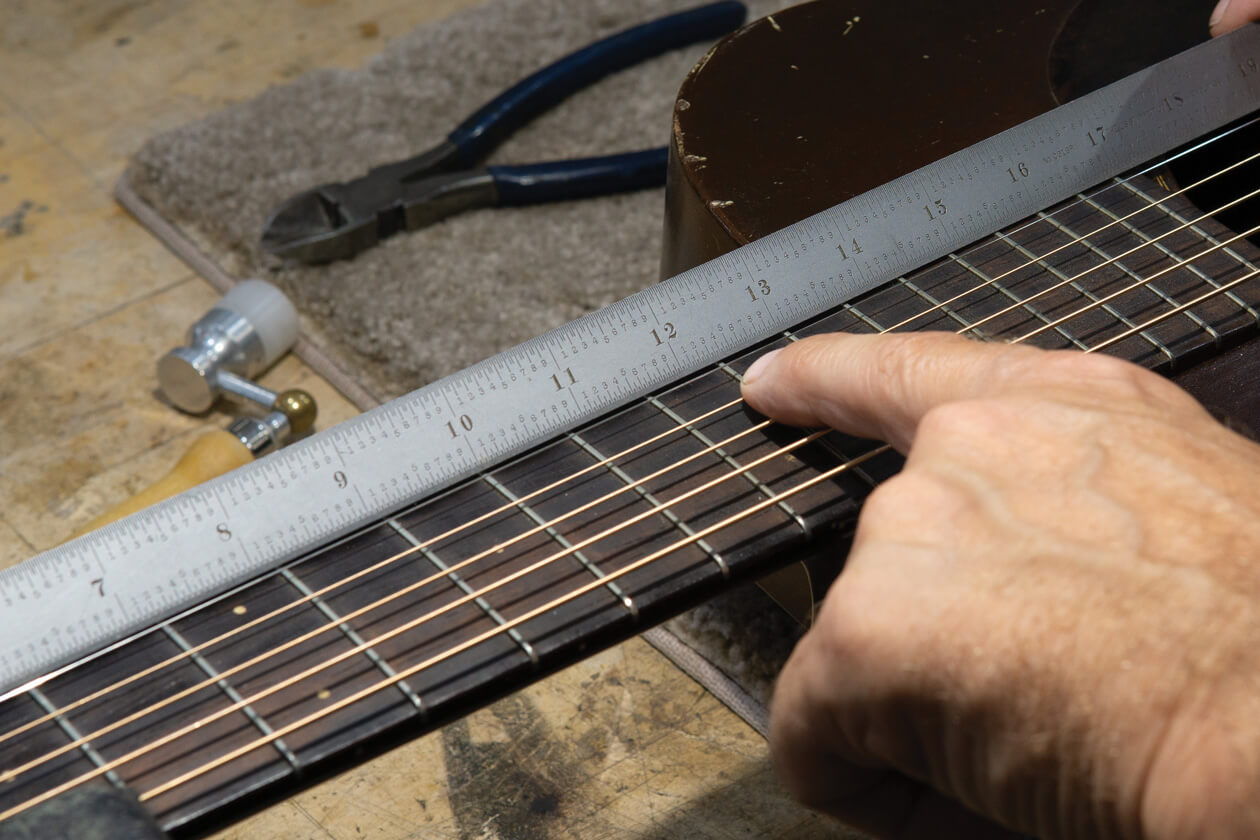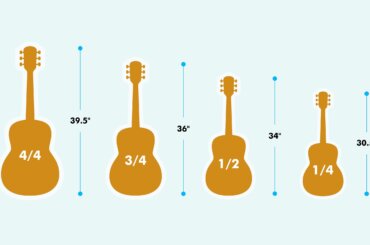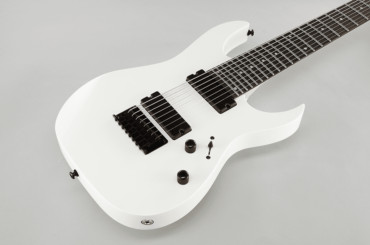When you are about to purchase your guitar and you ask for advice from a person that already has a guitar, one thing that he/she would surely tell you is to make sure the guitar scale length is suitable. If the advisor is close to you, “which guitar scale length suits you the most?” is also something that he/she is most likely to tell you. Guitar scale length is something that is the most important thing to enquire before purchasing a guitar. Before knowing, why guitar scale length is so important, let’s know what guitar scale length is?
What is the Guitar scale length?
A guitar scale length is nothing but a distance. So, just like every other distance, it takes two points into consideration to measure scale length too. A guitar scale length calculation involves measuring the distance between two points. The first point is the front edge of the nut, where it butts against the end of the fingerboard and the second point is the center of the 12th fret. Whatever, this distance comes out to be, is doubled. For example: If you have a guitar that is X company’s, Y model that measures 12-3/8″ at the 12th fret, then your guitar scale length is twice that is 24-3/4″ scale.
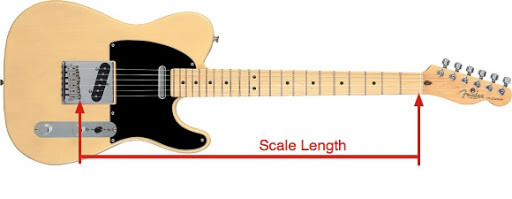
Companies that intend to give good intonation to their clients place a guitar’s saddle which adds a little extra string length to it. This extra length arrangement is called “compensation,” and it means the actual string length is longer than its 24-3/4″ scale measurement. At the center of the saddle, the length of it will be closer to 24-7/8″. Compensation offered by various models varies for different strings, and that’s why your saddle is placed at an angle.
Standard guitar scale length varies from one guitar to the other. The classical short guitar has a standard guitar scale length of 650 mm, a classical long guitar has a 10mm increment than a classical short in its standard guitar scale length measure. A bass guitar has a standard guitar scale length varying anywhere in the range of 30 to 34 inches. A Banjo has a standard guitar scale length varying from 22.25 to 27 inches. Mandolin, Ukuleles, and Dulcimer have standard guitar scale lengths of 14, 17, and 26 respectively.
After knowing the two points, the distance between which is known as guitar scale length let’s get to know what is the first point from which the distance is calculated and how does it look.
What is the Nut Bridge of a guitar?
The bridge on a guitar is the part that supports the strings when they travel over the guitar body. Not only does it functions as the component that transfers the vibrations of the strings into the body, but also in the case of an acoustic guitar, amplifies them. On many electric guitars, the height of the bridge is kept to be adjustable, which in turn, changes the distance between the strings and the fingerboard- known as the playing action.
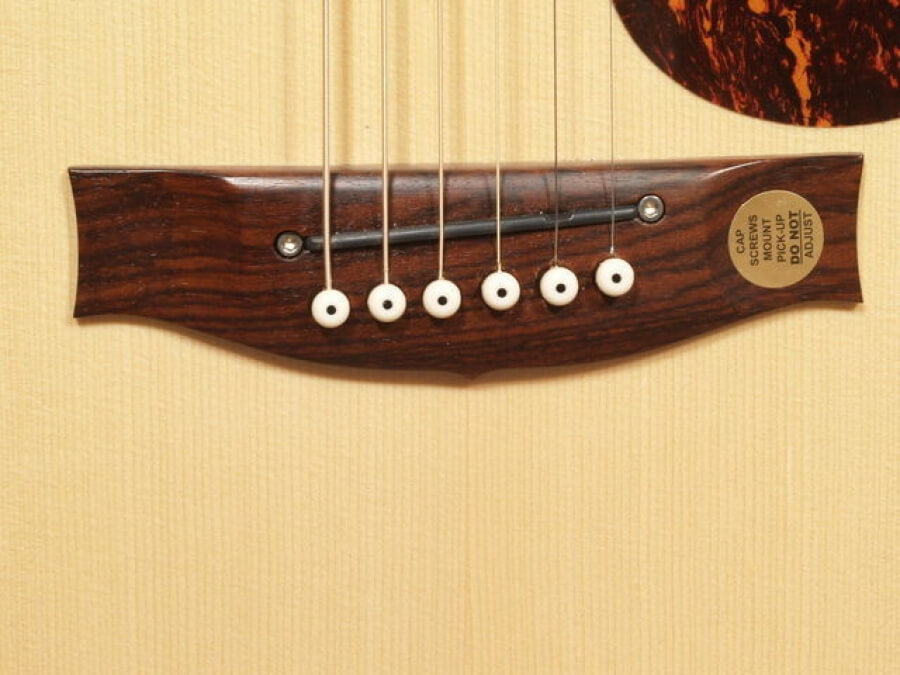
The bridge on an electric guitar is a piece of metal that keeps the strings to the body, holding them up to the correct height so that they can be strummed. On some electric guitars, the bridge serves an additional purpose i.e. to allow the guitarist to change the pitch of notes produced by the guitar. This effect of changing the pitch of a guitar using its bridge terms as tremolo.
Two bridge designs that allow this effect is the Fender Bridge, and the Floyd Rose bridge. Changing the pitch kicks in by pushing a lever attached to the bridge of these guitars. The bridge pivots, changing the tension, and in turn the pitch of the strings. These bridges are simple to manufacture but can be difficult to assemble and install because of which they require more maintenance. Hence, the main problem of these designs is a long term one.
There is trouble maintaining tune of the guitar, and the pivot points rapidly wear out. Because of these flaws, amateur and every day on stage performers prefer these designs lesser compared to others. The environmental impact of a guitar bridge is very low because they are not fed on any fuel, electricity, or maintenance, and usually, they last till the life of a guitar.
Now that you know about the first point from where the guitar scale length’s measure starts, it’s time to know about the second.
What do Frets of a guitar mean?
Frets are strips of metal—generally, a heterogeneous alloy of nickel and brass that embeds along a guitar’s fretboard. This alloy is usually for making the neck of a guitar. By pressing a string against the fretboard, the vibrating length of that string changes, and a specific musical note comes up. When seen technically, then the fret is the metal strip itself. It is a coincidence that the location on the fretboard below a fret is referred to as being that fret. The number of frets a guitar has, the number of musical notes it can produce in one string.

The position between the nut at the bottom of the fretboard and the first fret is referred to as the “first fret,” the position between the first and second frets is called the “second fret,” and so on. Moving up the fretboard i.e. moving towards the guitar body, raises the pitch of the resulting note by the number of frets that you move. That is why the note at the 12th fret of a guitar represents one full octave above the pitch of the open string because an octave is made up of 12 musical notes. The 12th fret of a guitar divides the “guitar scale length” (the distance between the nut and the bridge, above which the strings are attached) exactly in half.
Now that you are familiar with what is guitar scale length and the two points, the distance between which is termed guitar scale length, it’s time to tell you, why guitar scale length is important to know and how does it affect the overall tone of the guitar.
Guitar scale length’s relation with tone:
Guitar scale length plays a vital part in defining your instrument’s tone. With a longer scale and more room for the harmonics, one ends up with a clearer and ringing tone. Think of the Fender Stratocaster which is the most common instrument to have as an electric guitar. An increase in tension brings more focus, conversely, as the scale length shortens, things become a little more crowded altogether. The tone of the guitar thickens up and we hear that the guitar has more warmth.
Think of Les Paul’s tone here. As we lose a little of the tightness in the bass, we gain that warmth. As an example, we can look into the specifications of the Blue Collar model that has a 25.5″ scale length and which fits with a P90-style pickup. The Blue-Collar keeps its tone more focus and tight because of its longer scale. P90 brings a broader sound compared to a Telecaster or a Stratocaster.
The same logic goes for basses. A 30 inches scale length will usually give a warmer, darker tone than the more focussed, clearer tone of a 34 inched guitar scale length bass. The Gibson has a guitar scale length of 24-3/4 inches is shorter than the Fender 25-1/2 inches scale, resulting in a lower tension/easier to play feel and a warmer tone. PRS opted for a scale length of 25 inches, which is also found on Dobro and National guitars, they are fuller sounding than some guitars that have a guitar scale length of 24-3/4 inches and sometimes sound muddy. The treble strings of a guitar are not only easier to bend on a 25-1/2″ scale, but also have a warmer, and fuller tone.
The Conclusion
While purchasing a guitar one should keep in mind the tone that he/she wishes to produce using that guitar. This would lead players with fewer options from the many that are available. Once they are done with the kind of tone, they can take the help of their friend or someone who plays guitar. And, get to know the recommended scale length that can produce that tone. This is how they can furthermore shorten the list of guitars and bring it down to five or ten.
The other point that goes alongside guitar scale length is the string gauge. The pressure on the string also affects tension and you can change your string gauge for increasing or decreasing the tension as you need in the guitar. For example, if you bought a guitar that has a guitar scale length of 26.5 inches and you don’t like the increase in tension and are struggling to play bends on your guitar. The solution is, you can move to a lighter string gauge. Every time you move to a lighter string gauge, the tension will decrease and it will become lighter which will let you play with exactly the same tension on your 26.5 inches scale guitar as you did on your 24.75 inches scale guitar. This is all that you need to know about guitar scale length and its relation to the guitar.

